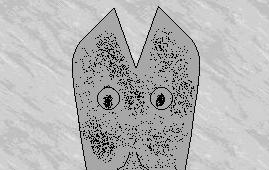by ELIAZAR ORPOISONEDHALLIWELL, Alternate Reality News Service Environment Writer
The alders are angry. The elms are exasperated. The maples are mad. The firs are furious. The redwoods are pissed. Righteously. The larches are livid. The birches are beside themselves.
This woody rage has been building for centuries. Given the pace at which members of the tree community think, it would have to.
Trees first started noticing the existence of intelligent apes soon after the discovery of fire, but thought it wasn’t a serious development given how few of their kind were hurt, and, anyway, the intelligent apes will learn to control the flames in time – that’s the whole point of being intelligent – so why worry?
“So why worry?” is a big thing among trees.
Clearcutting of trees to make way for villages gave the tree community pause. Trees being cut down to be used to build houses and maintain fires caused some discomfort in the tree community. Clearcutting of trees to make way for the expansion of villages into towns caused the tree community’s discomfort to grow to mild concern. Trees being cut down to build ships and furniture and other amenities of the modern age caused the tree community to become mildly agitated. Clearcutting of trees to make way for the expansion of towns into cities caused the tree community’s agitation to turn to unhappiness. Then came global warming, which caused creeping desertification which stripped the planet of larger and larger amounts of fertile land, changed the growing seasons on land that remained fertile and was responsible for extreme weather that damaged trees with record winds and out-of-control fires.
When the impact of the intelligent apes first manifest itself to the tree community, the majority of its members thought, if we ignore them, maybe they’ll just go away. As the population of the intelligent apes grew, the prevalence of that position shrank. By the time global warming grew to menacing proportions, the tree community grew positively irate.
Using their underground communications network (the original root server), the tree population of the western longitudes held a conference on the problem. Representatives of the different tree species debated what actions could be taken while many more listened intently.
“We could hold our breaths,” said Farfnir Farfloonian, the representative for the yews. “If we stopped creating oxygen for the intelligent apes, they would all die out. Then, those of us that survived could repopulate the Life Sphere.”
The yews were known among the community to be impulsive and prone to wildly inappropriate outbursts. So, it only took a week of thoughtful consideration before Gringoir the Elder, representing the oaks (all oaks were called “the Elder,” which, among other things, really confused the other members of the tree community), responded, “Think of all the innocent creatures we would be dooming at the same time. It is not -“
Three days later, Farfnir Farfloonian interrupted, “It would be worth it!”
A week and a half after that, Gringoir the Elder continued: “It is not for us to determine how other species will die. In any case, we do not have conscious control of the photosynthesis process, so we could not just stop breathing even if we wanted to.”
Aboveground, there was much susurration of leaves in agreement.
“The next time a big storm blows us down, we could fall on an intelligent ape,” suggested Heehalligan Harhargas, representing the pine family, five weeks later. “If we disabled enough of them, perhaps we could diminish their threat to the Life Sphere.”
Gringoir the Elder considered this solution for almost two weeks, but, in the end, rejected it, too. “It would be a grand sacrifice,” the old oak responded, “much revered in song and story. But falling on intelligent apes seems uncertain to end their treatment of us. We cannot be certain of falling in the right direction, or with enough force to disable enough of them to make a difference. That is a good thought, but it seems impractical.”
The discussion went back and forth in this manner for seven and a half years.
“I do not believe any action on our part is required,” Sir Praximus Delphineum eventually said on behalf of the elm trees. The elms were the most deliberate of the trees, and they made sure everybody knew it. “At the rate they’re going, the intelligent apes should destroy themselves within the next three hundred years – four hundred years tops!”
With that, the conference was adjourned.


